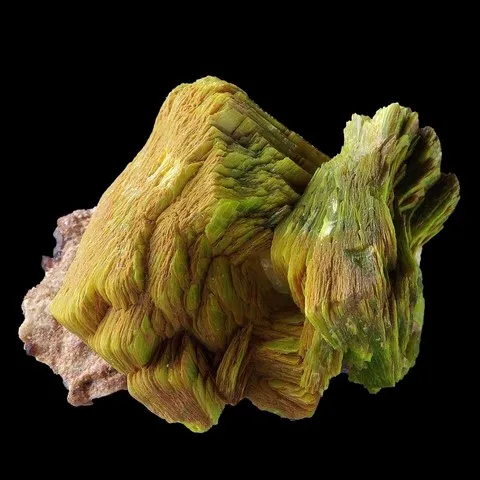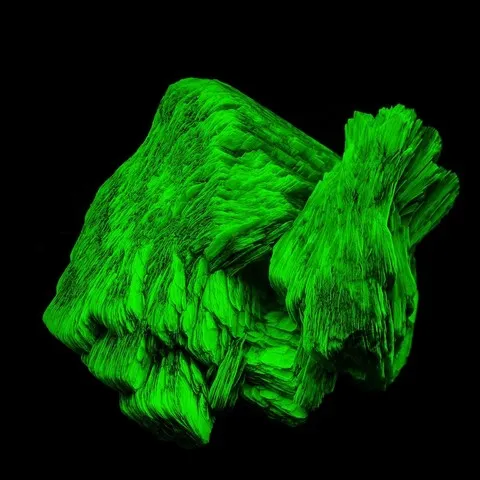URANOCIRCITE
Class : Phosphates, arsenates, vanadates
Subclass : Uranyl phosphates
Crystal system : Tetragonal
Chemistry : Ba(UO2)2 (PO4)2 10H2O
Rarity : Rare
Uranocircite is a hydrated phosphate of uranium and barium that is found, like many other secondary uranium minerals, in the superficial oxidation zones of deposits of this metal. It owes its name to the uranium which composes it and from the Greek kirkos (falcon), in allusion to its place of discovery : Bergen, near Falkenstein in Germany (literally stone of the falcon). Isostructural with autunite, it is much less frequent than the latter but there are terms of intermediate composition, barium replacing calcium. Very similar in appearance to autunite, uranocircite is presented in fine square millimeter lamellae, transparent to translucent, yellow-green to light green, united in scaly masses, fans or rosettes. Like autunite, it exhibits a strong green-yellow fluorescence under UV light. Dehydration to meta-uranocircite is common. It is a mineral that has no particular use.
Uranocircite in the World
Uranocircite in France
In France, pretty millimetric crystals come from the Batou deposit (Saône-et-Loire), and the Quistiave vein (Morbihan) provided beautiful square lamellar crystals as well as millimeter rosettes.
Twinning and special forms
Hardly observable twins parallel to {100} and {010}.
Fakes and scams
No fake recorded for this species, however very difficult to differentiate with the eye from autunite. Most uanocircite samples are treated in order to avoid their dehydration and therefore ensure good conservation. Old specimens are often varnished, varnish which does not necessarily age very well (yellowing, cracking). Modern treatments are almost invisible, and "plasticized" the sample. We use paraloid B72 to stabilize our uranocircites, it exists in a ready-made predosed solution to be applied directly with a brush and also in "beads" to be dissolved in acetone.
Hardness : 2 to 2.5
Density : 3.46
Fracture : Irregular
Streak : Yellow
TP : Translucent to transparent
RI : 1.574 to 1.588
Birefringence : 0.014
Optical character : Biaxial -
Pleochroism : Medium
Fluorescence : Green
Solubility : Acids
Magnetism : None
Radioactivity : Important


